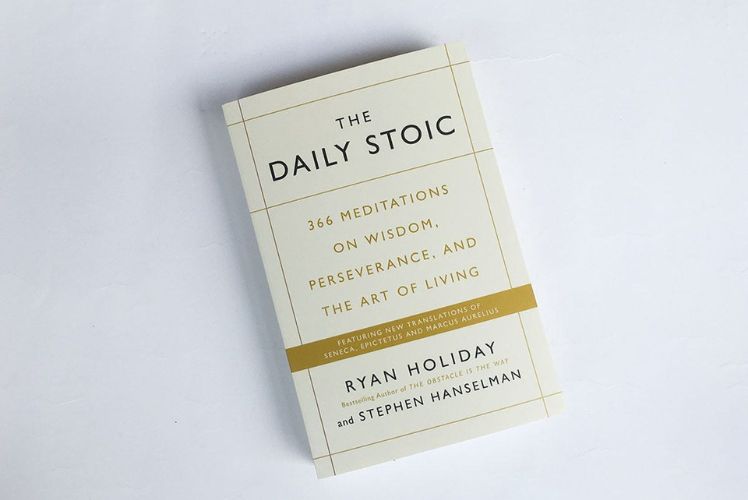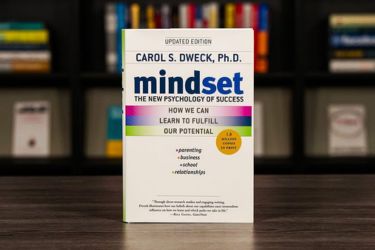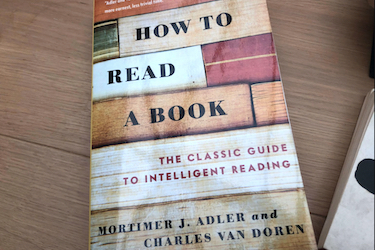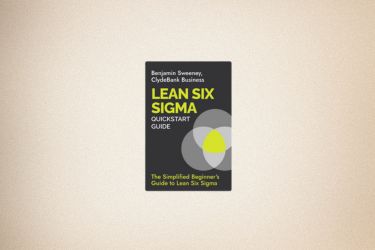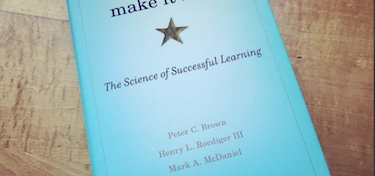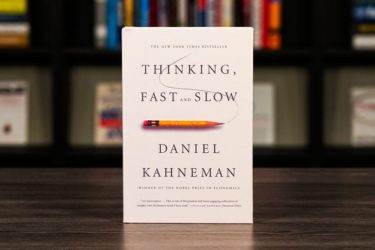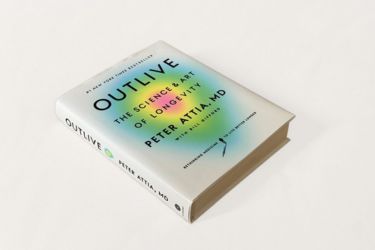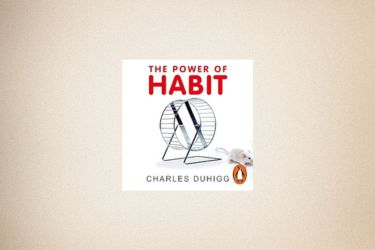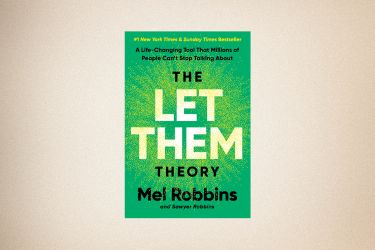Stoic philosophy has helped countless leaders and thinkers navigate life's challenges for over 2,000 years. Now, Ryan Holiday and Stephen Hanselman bring these ancient teachings to modern readers through The Daily Stoic. This book takes the wisdom of Marcus Aurelius, Seneca, and Epictetus and turns it into 366 bite-sized daily meditations.
The Daily Stoic transforms complex philosophical concepts into practical daily guidance that we can use to build resilience, make better decisions, and find meaning in everyday challenges. Each page offers a quote from an ancient Stoic philosopher followed by Holiday's modern interpretation and actionable advice.
We'll explore how this book works as both an introduction to Stoicism for beginners and a practical guide for anyone seeking greater mental strength. From its structure and key themes to its real-world applications, we'll examine whether The Daily Stoic lives up to its promise of bringing timeless wisdom into our daily routines.
Key Takeaways
- The book presents ancient Stoic philosophy through 366 daily meditations that combine classical quotes with modern practical applications
- Holiday and Hanselman successfully make complex philosophical concepts accessible whilst maintaining the depth needed for meaningful personal development
- The daily format works well for building consistent habits, though some entries may feel repetitive or less relevant depending on your current circumstances
Overview of The Daily Stoic
The Daily Stoic presents 366 meditations designed for year-round philosophical reflection, structured as a daily devotional combining ancient Stoic wisdom with modern insights from two experienced authors.
Purpose and Structure of the Book
The Daily Stoic serves as a practical guide to applying ancient Stoic philosophy in modern life. Ryan Holiday and Stephen Hanselman designed the book to make centuries-old wisdom accessible through daily practice.
Each of the 366 entries follows a consistent format. The authors present a quote from classical Stoic philosophers like Marcus Aurelius, Epictetus, or Seneca. They then provide commentary that connects these ancient teachings to contemporary challenges.
The book divides into twelve monthly themes. January focuses on clarity and perception. February explores action and energy. March examines awareness and present-moment thinking.
This structure allows readers to engage with Stoic principles gradually. We can absorb complex philosophical concepts through bite-sized daily readings rather than dense academic texts.
About the Authors: Ryan Holiday and Stephen Hanselman
Ryan Holiday brings modern marketing expertise and philosophical study to The Daily Stoic. He previously worked with major brands and wrote several books on strategy and philosophy.
Holiday discovered Stoicism during his twenties whilst working in high-pressure business environments. His personal experience with these teachings adds authenticity to his interpretations.
Stephen Hanselman contributes crucial translation work and scholarly expertise. He spent decades studying ancient texts and philosophy. His academic background ensures accuracy in presenting classical Stoic quotes.
Together, they bridge the gap between ancient wisdom and modern application. Holiday provides contemporary context whilst Hanselman maintains philosophical rigour.
Daily Format and Accessibility
Each daily reading requires only a few minutes to complete. The format includes a date, philosophical quote, and brief commentary section.
The authors write in plain English without academic jargon. Complex philosophical concepts become understandable through simple explanations and practical examples.
Readers can start on any date throughout the year. The daily stoic structure accommodates different reading preferences and schedules.
The book works well as morning reflection or evening contemplation. Many readers incorporate these daily readings into existing mindfulness or meditation practices.
Key Themes and Principles
The Daily Stoic centres on four fundamental virtues that guide human behaviour and three practical approaches for applying ancient wisdom to modern life. These principles provide a framework for developing resilience and finding meaning through daily philosophical practice.
Core Stoic Virtues: Wisdom, Courage, Justice, and Self-Discipline
Holiday structures the book around the four cardinal virtues of Stoic philosophy. These virtues form the foundation of ethical living according to ancient philosophers like Marcus Aurelius and Epictetus.
Wisdom appears as the ability to navigate complex situations with sound judgement. We learn to distinguish between what we can control and what lies beyond our influence.
Courage extends beyond physical bravery to include moral courage. This means standing up for our principles even when facing opposition or uncertainty.
Justice involves treating others fairly and contributing to the common good. Holiday emphasises that Stoicism is not about withdrawing from society but engaging with it responsibly.
Self-discipline helps us resist immediate pleasures that conflict with our long-term goals. We develop the strength to choose difficult but worthwhile paths over easy alternatives.
Acceptance and Control
The distinction between what we can and cannot control forms a central theme throughout the daily meditations. We learn to focus our energy on our thoughts, actions, and responses rather than external circumstances.
This principle teaches us to accept challenging situations without becoming passive. Instead of fighting against unchangeable events, we redirect our efforts towards our reactions and decisions.
Holiday shows how this mindset reduces anxiety and frustration. When we stop trying to control others or unpredictable events, we find peace in managing our own choices.
The book provides practical exercises for identifying areas of control in daily life. We practise releasing attachment to outcomes whilst maintaining commitment to our efforts.
Personal Growth Through Reflection
Each daily entry encourages us to examine our thoughts and behaviours through a Stoic lens. This consistent reflection helps us identify patterns that either support or hinder our development.
Holiday emphasises that growth comes from honest self-assessment. We learn to view mistakes as opportunities for learning rather than reasons for self-criticism.
The meditations guide us towards greater self-awareness about our motivations and reactions. This understanding allows us to make more deliberate choices aligned with our values.
Regular philosophical reflection becomes a tool for continuous improvement. We develop the habit of questioning our assumptions and testing our beliefs against Stoic principles.
Influence of Ancient Stoic Philosophers
The Daily Stoic draws heavily from three major Stoic philosophers whose teachings form the backbone of the book. Marcus Aurelius provides personal reflections on leadership and duty, whilst Seneca offers practical wisdom for daily challenges, and Epictetus contributes fundamental principles about control and freedom.
Marcus Aurelius and Meditations
Marcus Aurelius stands as perhaps the most influential source in Holiday's work. His personal journal, known as Meditations, provides raw insights into how a Roman emperor applied Stoic principles.
We see Aurelius wrestling with power, responsibility, and mortality. His writings reveal a leader trying to stay grounded despite immense pressure.
Key themes from Marcus Aurelius include:
- Acceptance of change and impermanence
- Focus on what we can control
- Duty to serve others
- Memento mori (remembering death)
The emperor's reflections on leadership particularly resonate in modern contexts. He wrote about staying humble and serving the common good. These ideas appear throughout The Daily Stoic as guidance for handling workplace stress and personal relationships.
Marcus Aurelius also emphasised viewing obstacles as opportunities. This concept becomes central to Holiday's interpretation of Stoic wisdom for contemporary readers.
Seneca's Wisdom
Seneca the Younger contributed practical philosophy that translates well to modern life. His letters and essays focus on wealth, friendship, and time management.
We find Seneca's influence in the book's approach to daily challenges. He wrote extensively about how to handle setbacks and maintain perspective during difficult times.
Seneca's main contributions include:
- Managing emotions during crisis
- Proper relationship with money and possessions
- Value of friendship and community
- Importance of continuous learning
His background as both philosopher and wealthy advisor gives his teachings credibility. Seneca understood the pressures of public life and material success.
The Roman writer also pioneered the practice of evening reflection. This habit appears frequently in The Daily Stoic as a tool for self-improvement and moral development.
Epictetus' Teachings
Epictetus provides the philosophical foundation for much of Stoic thought. Born a slave, he developed teachings about true freedom that transcend external circumstances.
We encounter his influence in the book's emphasis on personal responsibility. Epictetus taught that we always have choices, regardless of our situation.
Core teachings from Epictetus:
- Dichotomy of control (what's up to us vs. not up to us)
- Internal freedom regardless of external constraints
- Discipline of desire and action
- Focus on character over reputation
His famous maxim about controlling only our thoughts and actions appears throughout Holiday's daily meditations. This principle forms the cornerstone of practical Stoicism.
Epictetus also stressed the importance of role ethics. We each have multiple roles in life, and excellence comes from fulfilling these duties properly rather than seeking recognition or reward.
Practical Application and Benefits
The Daily Stoic transforms ancient philosophy into actionable daily practices that directly impact mental wellbeing and personal growth. These practical applications help readers develop stronger focus, better emotional regulation, and lasting happiness through structured reflection and self-discipline.
Incorporating Daily Meditation and Journalling
Daily meditation forms the foundation of Stoic practice as presented in Holiday's book. Each day offers a specific passage for contemplation, typically requiring 5-10 minutes of focused reflection.
The structure makes meditation accessible for beginners. We don't need special equipment or training. Simply reading the daily passage and thinking about its meaning creates a meditative experience.
Key daily meditation practices include:
- Morning reflection on the day's passage
- Evening review of how we applied Stoic principles
- Weekly assessment of personal growth
Journalling amplifies these benefits significantly. Writing down our thoughts about each passage helps us process the ideas more deeply. Many readers find that keeping a Stoic journal reveals patterns in their thinking and behaviour.
The book's format supports consistent journalling habits. Short daily entries feel manageable compared to lengthy writing sessions.
Cultivating Mental Health and Happiness
Stoic principles directly address common mental health challenges like anxiety, anger, and disappointment. The daily readings teach us to separate what we control from what we cannot control.
This distinction reduces stress and worry considerably. When we focus only on our actions and attitudes, external events lose their power to disturb our peace.
Mental health benefits we gain include:
- Reduced anxiety about future events
- Better emotional regulation during conflicts
- Increased resilience during difficult periods
- Greater self-acceptance and inner calm
Happiness emerges naturally from Stoic practice. Rather than chasing external validation or material success, we learn to find satisfaction in our character development and daily choices.
The book's approach emphasises sustainable wellbeing over temporary pleasure. This creates lasting positive changes in our mental state and overall life satisfaction.
Building Focus and Self-Discipline
Daily Stoic practice strengthens our ability to concentrate and make deliberate choices. Regular meditation improves attention span and mental clarity.
The commitment to daily reading builds discipline automatically. Even on busy days, spending a few minutes with Stoic wisdom reinforces our self-control muscles.
Focus improvements we experience:
- Better concentration during work tasks
- Less distraction from social media and entertainment
- Clearer decision-making processes
- Stronger commitment to long-term goals
Self-discipline grows through consistent small actions. Reading daily passages teaches us that character develops through regular practice, not dramatic gestures.
The book's teachings help us resist impulses and make choices aligned with our values. This creates momentum that extends beyond philosophy into all areas of life.
Modern Relevance and Critique
The Daily Stoic bridges ancient philosophy with contemporary challenges, offering practical wisdom for modern readers whilst facing certain limitations in its approach to complex philosophical concepts.
Daily Stoic in Contemporary Life
We find Holiday's approach particularly effective for busy professionals and students seeking daily guidance. The book's 366-day structure fits naturally into modern routines.
The daily stoic format works well for people who struggle with traditional philosophy texts. Each entry takes just minutes to read and digest.
Holiday connects ancient concepts to current situations like workplace stress and social media pressure. We see this in his treatment of perseverance through modern examples rather than purely historical ones.
The book addresses contemporary issues including:
- Work-life balance through Stoic principles
- Digital overwhelm using ancient wisdom
- Career setbacks with philosophical perspective
- Relationship challenges via Stoic teachings
Reactions to the book from readers show it helps people develop emotional resilience in daily situations. Many report using specific meditations during difficult moments at work or home.
The practical applications make Stoicism accessible to newcomers who might otherwise avoid philosophy entirely.
Strengths and Limitations of the Book
Key Strengths:
- Clear, simple language that avoids academic jargon
- Daily format encourages consistent practice
- Relevant examples for modern readers
- Effective introduction to Stoic concepts
We appreciate Holiday's ability to translate complex philosophical ideas into actionable advice. The book succeeds as an entry point for beginners.
However, we identify several limitations. The format sometimes oversimplifies nuanced philosophical concepts that deserve deeper exploration.
Notable Weaknesses:
- Surface-level treatment of complex topics
- Limited historical context for quotes
- Repetitive themes across some entries
- Lacks rigorous philosophical analysis
Some philosophy scholars argue the book prioritises accessibility over accuracy. We find this critique partially valid, though the trade-off serves the intended audience well.
The daily format, whilst appealing, can fragment interconnected Stoic concepts that benefit from comprehensive study.
Frequently Asked Questions
The Daily Stoic raises common questions about its practical application, philosophical foundations, and target audience. Readers often wonder about its structure, themes, and how it compares to other Stoic texts.
What are the central themes addressed in 'The Daily Stoic'?
The book focuses on three main themes: wisdom, perseverance, and the art of living. Each theme builds upon ancient Stoic principles adapted for modern life.
Wisdom sections teach readers to accept only what is true and think clearly. These passages help develop better judgment and decision-making skills.
Perseverance chapters address how to handle difficulties and setbacks. The book shows how Stoics viewed challenges as opportunities for growth.
The art of living theme covers daily practices and mindset shifts. These sections focus on matching your needs with what you can actually control.
How does 'The Daily Stoic' connect with traditional Stoic philosophy?
Each daily reading begins with a quote from classical Stoic philosophers. The authors draw from Marcus Aurelius, Epictetus, and Seneca regularly.
Holiday translates ancient concepts into modern language. He maintains the core ideas whilst making them accessible to today's readers.
The book preserves key Stoic principles like focusing on what you control. It also emphasises working for the common good and accepting reality as it is.
Can 'The Daily Stoic' be utilised as a daily practical guide?
The book contains 366 short readings, one for each day of the year. Each entry takes only a few minutes to read and reflect upon.
The format makes it easy to build a consistent reading habit. You can read one passage each morning or evening as part of your routine.
Each reading includes practical applications and modern examples. This helps you apply Stoic ideas to real situations in your daily life.
Who would benefit most from reading 'The Daily Stoic'?
People new to Stoicism will find this book an excellent introduction. The short daily format prevents feeling overwhelmed by complex philosophy.
Those seeking practical wisdom for handling stress and challenges benefit greatly. The book offers concrete tools for managing difficult situations.
Readers interested in mindfulness and personal development often connect with the content. The daily structure supports building new mental habits.
Busy professionals appreciate the brief, focused readings. You don't need hours of study to gain valuable insights.
What distinguishes 'The Daily Stoic' from other books on Stoicism?
The daily devotional format sets it apart from traditional philosophy books. Most Stoic texts require lengthy study sessions to understand.
Holiday combines ancient quotes with contemporary examples and language. This bridge between old and new makes the wisdom more relatable.
The book focuses on practical application rather than academic analysis. Each passage aims to provide actionable guidance for daily life.
The bite-sized format makes Stoic philosophy accessible to mainstream readers. Complex concepts are broken down into digestible pieces.
How does Ryan Holiday structure his insights in 'The Daily Stoic'?
Each daily entry follows a consistent three-part structure. It begins with a quote from an ancient Stoic philosopher.
The middle section explains the quote's meaning in modern terms. Holiday provides context and examples that relate to contemporary life.
Each reading ends with practical guidance or reflection questions. This helps you apply the lesson to your own circumstances and challenges.
The entries are grouped into monthly themes throughout the year. This organisation helps readers focus on specific aspects of Stoic practice over time.

